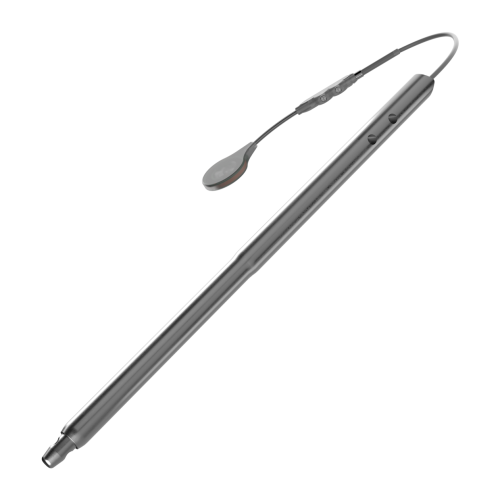Home / Patient Stories
Not long ago, Justin and his wife celebrated their wedding day. At 6’9”, Justin was standing tall – but with legs bent and in pain. Justin was suffering from the condition which he feared would leave him crippled and unable to fully enjoy their parenthood to come.
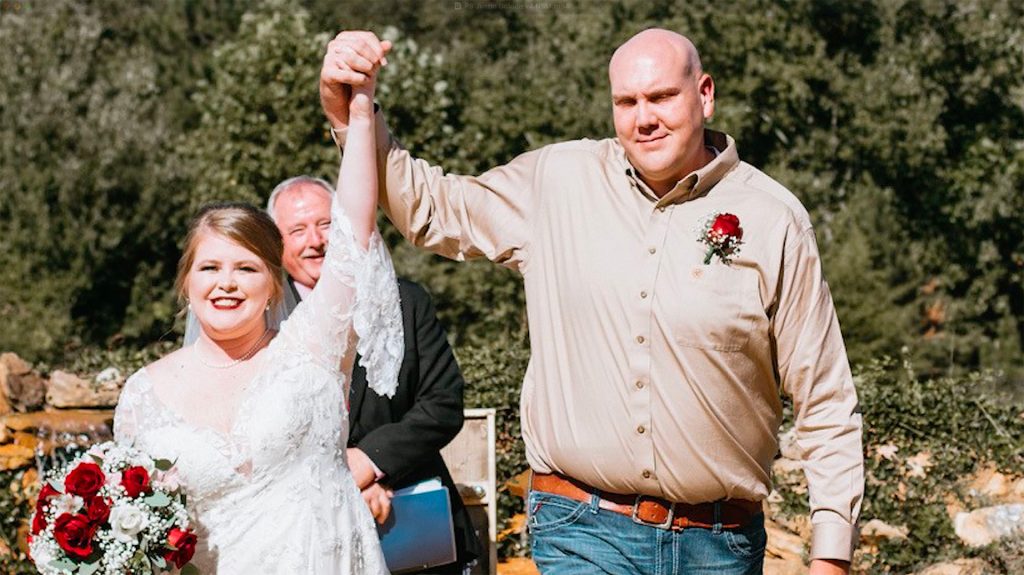
X-rays showed Justin’s severe genu valgum (knock knees), causing his legs to bend painfully and leading to an altered gait and stress fractures that made everyday activities nearly impossible.
The medical team took the extraordinary step of electing to treat both legs simultaneously to ensure Justin could be healed in time for his daughter’s birth.
His surgeon chose the TL-HEX™ external fixation system because of its dependability and accuracy. The external fixator gradually corrected Justin’s leg alignment.
The first surgery was focused on the tibias,. Following the surgery, the fixators were adjusted twice a day to gradually correct the bone.
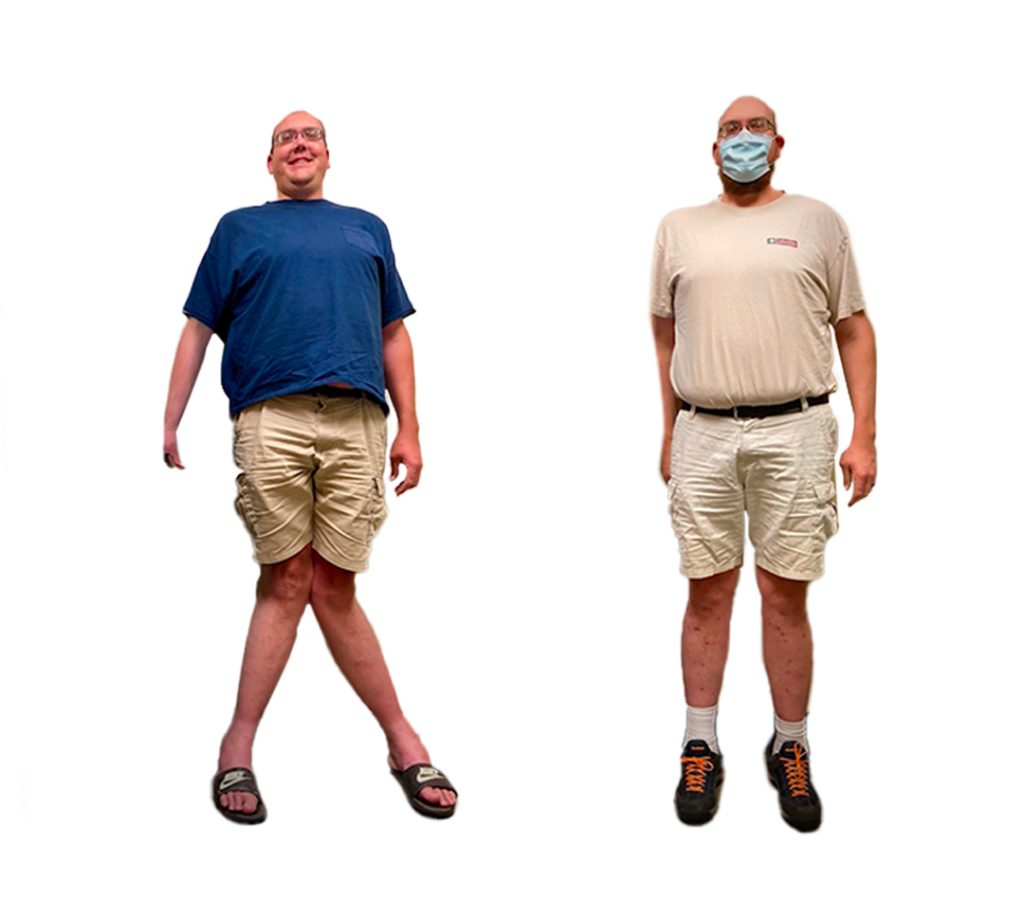
Then we place a receiver, and the receiver sits just under the skin. The patient takes the transmitter and puts it on top of the skin, sending a signal to the receiver which then goes into the nail and the nail has a motor which lengthens it.”
“When I heard I had to have that surgery I was definitely scared that I wouldn’t be able to play soccer, that I wouldn’t be able to run again,” said Jadon. “When Dr. Casey told us there was this new apparatus that they could insert into his leg, nothing was going to be sticking out of it, but he was just going to be able to put an electronic device to it to grow it, I think there was just a lot of relief for both Jadon and I that this thing was going to be pretty discrete,” said Wendy.
The lengthening process, facilitated by the Fitbone nail, surprised Jadon with its efficiency. Within a few months, he was done, and the tangible progress showcased in scans amazed his family. Jonathan marveled at the images, appreciating the sight of bone regrowth in the gap left by the tumor.
“The fact that you can remove the rod and he’s now just Jadon without anything in his leg, it’s pretty incredible. From my perspective, anyone who is looking at this as an option, I would do it over again in a heartbeat because I can see what it’s given my son again and I don’t think there is another option better.”
Jadon’s recovery was swift, and the removal of the rod marked a significant milestone. Jonathan, reflecting on the transformative journey, wholeheartedly endorsed the decision to opt for this innovative solution, acknowledging the unparalleled freedom it restored to his son. Now, with the recovery behind him, Jadon is back on the soccer field, scoring goals, and embracing his role in the team.
“I love seeing Jadon being able to get out there with his sisters and rollerblade and play sports and just be a family again,” said Wendy. “He is free to go, and he can do as much as he wants, there’s no restrictions whatsoever and I love that he can just go be a kid. He’s whole again.”
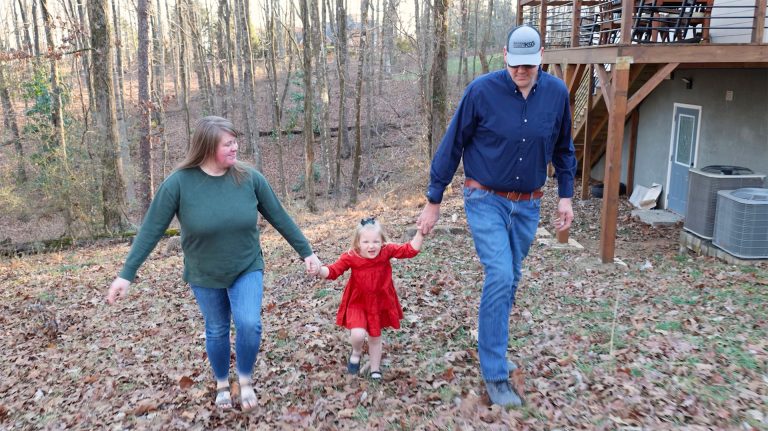
The patient stories above show an individual’s response to treatment. They are not intended to provide any indication or guarantee of the response other people may have. Please consult a qualified medical provider for diagnosis and treatment.
Important safety information: Download the Product Instructions For Use.
TL-HEX™ is a dynamic, 3D external fixation system that combines hardware and software to correct bone deformities. This hexapod-based system functions as a 3D bone segment-repositioning module. In essence, the system consists of circular and semi-circular external supports secured to the bones by wires and half-pins, and interconnected by six struts.
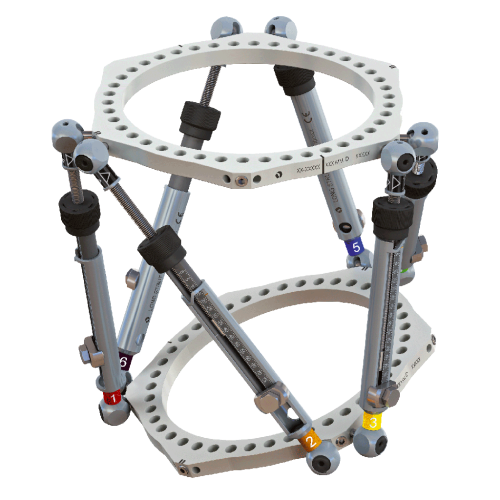
A very active 16 year-old, Jadon loves playing soccer, rollerblading with sisters and hanging out with friends. But a few years ago, all of this seemed like it would not be possible.
It all began when Jadon’s mother, Wendy, noticed a subtle bowing in his leg around the age of 13. Concerned, she consulted her husband, and together, they embarked on a journey that would test their strength as a family.
Dr. Virginia Casey, a Pediatric Orthopedic Surgeon at OrthoCarolina, identified a varus deformity – a bow-legged condition caused by an enchondroma, a bone lesion consistent with Ollier’s disease. This condition can cause LLD – leg length discrepancy, with one leg shorter than the other.
“Dr. Casey told us that Jadon had a tumor and it needed to be removed,” said Wendy.
The revelation of a tumor instilled fear in Jadon and his family. Jonathan, Jadon’s father, confessed to the overwhelming uncertainty, delving into research to comprehend Ollier’s disease.
Jadon vividly recalls his initial reaction, fearing the worst: “It’s your biggest fear when you hear the word tumor.”
The two-inch length discrepancy in Jadon’s right leg significantly impacted his mobility, causing back pain and even necessitating physical therapy. The benign tumor diagnosis provided relief but required patience as Jadon awaited
full skeletal maturity before the surgery to correct the discrepancy could proceed.
“A good candidate for leg lengthening with the Fitbone nail is a just barely skeletally mature patient, so still an adolescent who has a limb length discrepancy with or without deformity,” said Dr. Casey.
“The Fitbone™ Intramedullary Lengthening Nail works by placing the nail through the knee into the femur,” continued Dr. Casey. “We then put two screws close to the knee, one screw above the cut in the bone.
Then we place a receiver, and the receiver sits just under the skin. The patient takes the transmitter and puts it on top of the skin, sending a signal to the receiver which then goes into the nail and the nail has a motor which lengthens it.”
“When I heard I had to have that surgery I was definitely scared that I wouldn’t be able to play soccer, that I wouldn’t be able to run again,” said Jadon. “When Dr. Casey told us there was this new apparatus that they could insert into his leg, nothing was going to be sticking out of it, but he was just going to be able to put an electronic device to it to grow it, I think there was just a lot of relief for both Jadon and I that this thing was going to be pretty discrete,” said Wendy.

The lengthening process, facilitated by the Fitbone nail, surprised Jadon with its efficiency. Within a few months, he was done, and the tangible progress showcased in scans amazed his family. Jonathan marveled at the images, appreciating the sight of bone regrowth in the gap left by the tumor.
“The fact that you can remove the rod and he’s now just Jadon without anything in his leg, it’s pretty incredible. From my perspective, anyone who is looking at this as an option, I would do it over again in a heartbeat because I can see what it’s given my son again and I don’t think there is another option better.”
Jadon’s recovery was swift, and the removal of the rod marked a significant milestone. Jonathan, reflecting on the transformative journey, wholeheartedly endorsed the decision
to opt for this innovative solution, acknowledging the unparalleled freedom it restored to his son. Now, with the recovery behind him, Jadon is back on the soccer field, scoring goals, and embracing his role in the team.
“I love seeing Jadon being able to get out there with his sisters and rollerblade and play sports and just be a family again,” said Wendy. “He is free to go, and he can do as much as he wants, there’s no restrictions whatsoever and I love that he can just go be a kid. He’s whole again.”
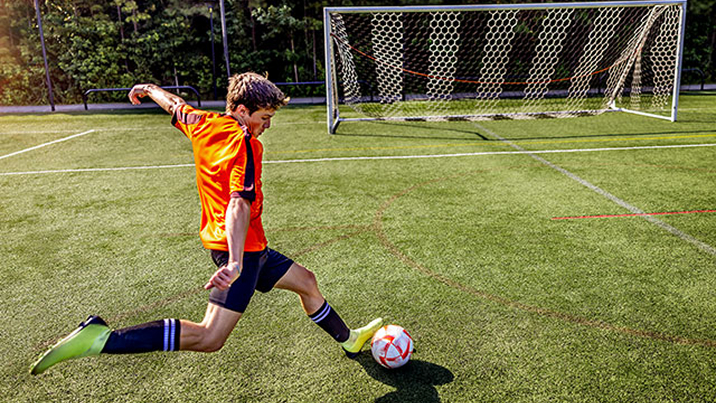
The patient stories above show an individual’s response to treatment. They are not intended to provide any indication or guarantee of the response other people may have. Please consult a qualified medical provider for diagnosis and treatment.
Important safety information: Download the Product Instructions For Use.
The Fitbone™ Intramedullary Limb-Lengthening System was developed in partnership with Professor Baumgart. The product was launched in 1997. Since then, this innovative treatment concept has grown into a global success story. The Fitbone™ TAA Intramedullary Lengthening system is intended for limb lengthening
of the femur and tibia.
With appropriate pre-operative planning, it is possible to ensure good limb alignment so that the limb is correct at the end of lengthening.

Strong, determined and seemingly fearless, David trained for years as a competitive BMX cyclist in Hungary before moving to England. “I started extreme mountain biking for the first time when I was fourteen. I just love to fly into the air on a bike and do tricks,” he said.

Ironically, his job as a pizza delivery boy proved to be more dangerous.
“I was on my way home. I had finished up at work, and suddenly I realized a car is turning in front of me, and it hit me on my right side,” said David. “From there, I remember waking up on the sidewalk and I couldn’t move my right leg. That’s how I knew there was a big problem.”
Every bone in David’s right leg was broken, his foot crushed, and the nerves, which provide feeling to the lower leg, had been severed. Not one, but two different surgeons recommended amputating the 22-year old’s right leg. Understandably, David was devastated.
“I didn’t even want to hear about it. I became withdrawn,” he said. “They told me that I probably wouldn’t be able to walk anymore, or at least stand up on my right leg and I wouldn’t be able to bike. It hit me hard.”
David was desperate for another opinion. Orthopedic surgeon Dr. Satyagit Naique offered a glimmer of hope. Together with plastic surgeons, Dr. Naique performed multiple surgeries including a free flap procedure, where tissue and an artery from David’s scapula were used to restore the skin and blood flow to his foot. “For four straight days they secured my leg. At the end of the fourth day, they said there was a chance that they could save it, but there wasn’t any guarantee that this would work,” said David.
The surgeons used the Orthofix TL-HEX system, an extremity fixation device that keeps bone segments aligned during the healing process. The system consists of circular and semi-circular external supports secured to the bones by wires and pins and interconnected by six struts.
Since the successful procedure that saved him from the amputation of his leg, David has begun to reclaim his life, doing what some said was impossible… getting back on a bike. He says he feels alive again. “It was fantastic to sit on a bike again and jump through the air,” said David. ”One of my dreams came true again. It’s an unbelievably great feeling.”
The patient stories above show an individual’s response to treatment. They are not intended to provide any indication or guarantee of the response other people may have. Please consult a qualified medical provider for diagnosis and treatment.
Important safety information: Download the Product Instructions For Use.
TL-HEX™ is a dynamic, 3D external fixation system that combines hardware and software to correct bone deformities. This hexapod-based system functions as a 3D bone segment-repositioning module. In essence, the system consists of circular and semi-circular external supports secured to the bones by wires and half-pins, and interconnected by six struts.

Kevin was born with Moebius syndrome, which means he’s unable to smile, blink, grimace, or make any kind of facial expression. Children with Moebius syndrome can also have club foot. Kevin has bi-lateral club foot, meaning it affects both of his feet, leaving him unable to stand.
Like many patients with club foot, physicians tried to correct his feet by placing his legs in serial casts; unfortunately, this was not successful for Kevin.
“We probably did about four sets of serial casting, which means up to six months of being in a cast, when we finally said, no more, he’s probably not going to walk, and he can be in a wheelchair and we will be okay with that,” said his mom Kacie.
Kevin’s parents were resigned to the reality that he would never walk, but Kevin had a different plan.
“Kevin was seven when he started showing signs that he wanted to walk. He started pulling to stand, climbing onto furniture, asking for our hands to walk around, but his feet were so turned in and so deformed at that point, he did not have a good base to stand on,” said Kacie. “As we were looking for answers and searching for what to do next, we consulted a surgeon who recommended amputating Kevin’s feet because he felt that Kevin might have a better chance walking with prosthetics. We knew that wasn’t the answer.”
Determined to find a solution, Kacie contacted podiatric foot and ankle surgeon Dr. Daniel Hatch with Foot and Ankle Colorado, who had treated Kevin in the past, to see if anything could be done.
“The procedure for Kevin that we elected to do was the use of external fixation. It’s done very gradually, with one millimeter a day adjustments and has proven to be very successful with this type of deformity,” said Dr. Daniel Hatch.
“When I first saw Kevin’s feet in the fixators, I thought, ‘what did I get myself into?’” said Kacie. “Adjusting the fixators for the first time was very scary. I thought I was going to hurt him, but that wasn’t the case.”
With a careful therapy regiment and Kevin’s determination, a 10 year-old little boy who had never walked soon found himself up and about.
“If I was going talk to another parent about the fixators, I would definitely tell them that it is a long road. It is not easy, but it is so worth it,” said Kacie.
The patient stories above show an individual’s response to treatment. They are not intended to provide any indication or guarantee of the response other people may have. Please consult a qualified medical provider for diagnosis and treatment.
Important safety information: Download the Product Instructions For Use.
TL-HEX™ is a dynamic, 3D external fixation system that combines hardware and software to correct bone deformities. This hexapod-based system functions as a 3D bone segment-repositioning module. In essence, the system consists of circular and semi-circular external supports secured to the bones by wires and half-pins, and interconnected by six struts.


When James, age 68, went to the doctor for a cut on his toe, he didn’t expect to lose half his foot. But that’s what happened.
“I’m diabetic and was sent to the podiatry hospital where they ended up taking a toe off,” said James. “I thought that would be it, but the infection was in my foot,” said James.
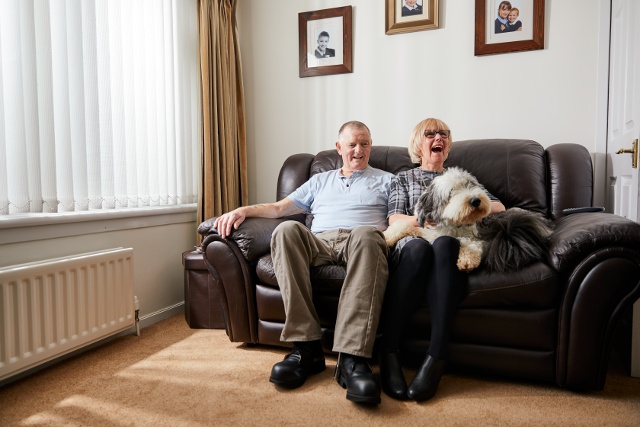
Instead of undergoing life-altering below-knee amputation, orthopedic surgeon Jonathan Page, Cert Ed, MBChB, MD, FRCS, had to do a partial amputation of the foot in order to save his leg. The surgeon then performed a procedure to reconstruct James’ mid-foot using a TL-HEX external fixation frame and a specific bone cement that provides structure for the bones and tissue to heal around.
“He emphasized that there would be no guarantees with the procedure, but I wanted to save my leg,” said James. “I didn’t see the frame until I woke up and saw all those pins in my bones. I couldn’t put down my leg. But over six months, I got used to it, and the foot was doing all right, and you don’t even think of it.”
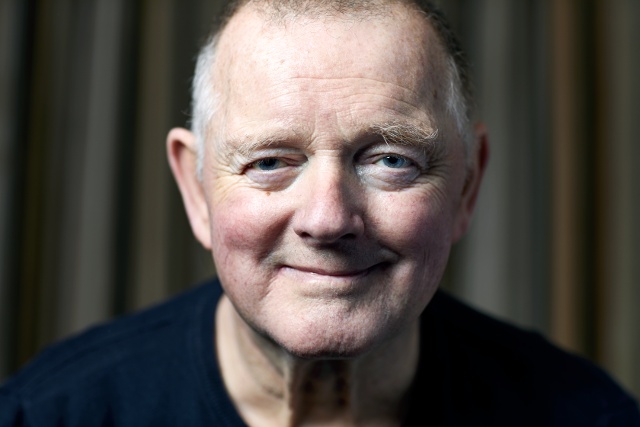
James had to moisturize the skin around the frame twice a day, to keep it from drying out, and cleaned the pin-sites at night. Dr. Page performed scheduled strut adjustments over the course of treatment.
“It’s like growing another foot,” James said. “Dr. Page kept me up to speed all the way through, showing me the X-rays and pointing out the bones that were healing.”
Before the surgery and treatment with TL-HEX, James was enjoying retirement and long walks with his new dog. Now that he’s back on his feet, he looks forward to getting back to those companionable strolls. He’s already back up to half a mile.
“It still feels strange to walk barefoot, and I prefer shoes for that extra bit of support. It doesn’t hurt, it’s just awkward,” said James. “I’d advise other patients to talk to their surgeon, ask lots of questions. You’ll have a long way to go. Without a doubt, it’s been worth the effort for me.”
“Once my strength is back in the ankle, I’ll attempt to walk the dog and, if I’m able to do that, there’ll be no holding me back.”
The patient stories above show an individual’s response to treatment. They are not intended to provide any indication or guarantee of the response other people may have. Please consult a qualified medical provider for diagnosis and treatment.
Important safety information: Download the Product Instructions For Use.
TL-HEX™ is a dynamic, 3D external fixation system that combines hardware and software to correct bone deformities. This hexapod-based system functions as a 3D bone segment-repositioning module. In essence, the system consists of circular and semi-circular external supports secured to the bones by wires and half-pins, and interconnected by six struts.

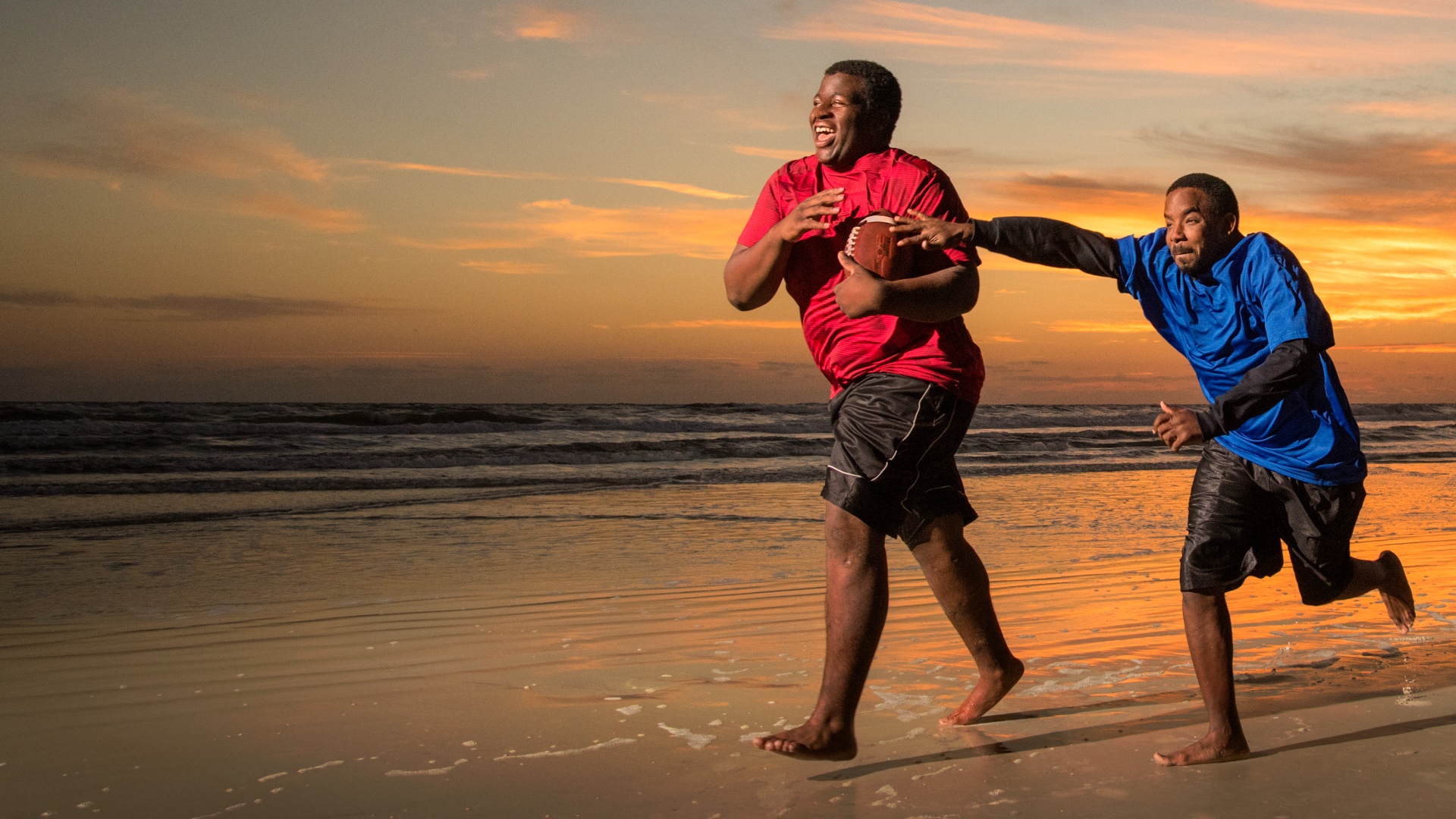
“I knew something was wrong with Q’Shaun’s legs as a toddler because he didn’t try to start walking till he was 2 years-old, and when he did finally walk, he was clumsy and couldn’t keep his balance. The older he got, the more twisted and bowed his legs became.”
Q’Shaun was diagnosed with Blount’s disease, a growth disorder of the lower leg bone that is characterized by a bowing appearance of the leg below the knee joint.
“He had a substantial bowing of both legs causing pain, deformity and this limited his activities,” said Dr. Christopher Iobst, Director, Center for Limb Lengthening and Reconstruction, Nationwide Children’s Hospital and Clinical Associate Professor, Orthopedic Surgery at The Ohio State University, College of Medicine.
“The doctors we saw said to wait till he was older and stronger to try and correct his legs. It was hard to wait. He didn’t have friends; he was bullied because of his bowed legs. He missed out on a lot growing up,” said Carol. “He is a big kid, and he loves sports. Even with his legs, he was determined to play baseball and football. It was scary to see him run as it looked like his legs would just break because they were so twisted.”
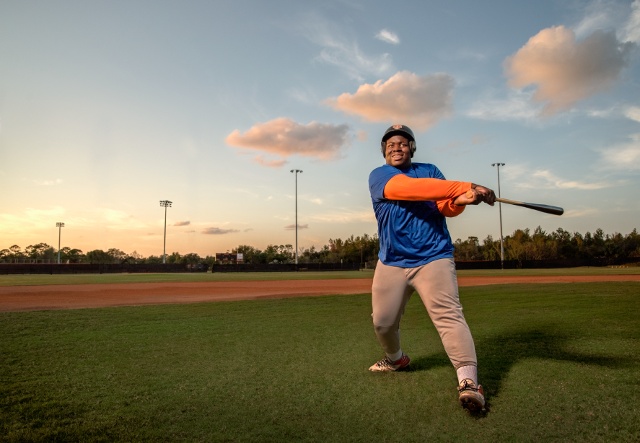
After many years of struggling and waiting, it was finally time for Q’Shaun to have surgery to correct his legs.
“The doctors told us that if he didn’t have the surgery before he was 16, then he would be in a wheelchair,” said Carol. “That made the decision to have the correction done easy; there really wasn’t another option.”
“He had a large amount of deformity,” said Dr. Iobst. “This can be corrected gradually with the TL-HEX which is the safest method for bone healing and soft tissue healing.”
Carol was a little shocked when she first saw Q’Shaun after surgery.
“It was scary at first to see it on his leg. I was very scared of tightening the system,” said Carol.
Carol has a few words of advice for other parents faced with this type of procedure. “You need lots of communication and support. You can’t do it by yourself. Take it one day at a time, one step at a time because it’s worth it,” said Carol.
Now, one year after his last surgery, Q’Shaun is playing baseball, football and he’s a member of his high school’s ROTC unit where he plays the drum and marches in local parades and, just as important, he now has friends.
“I am so proud; I cry when I see him march because it’s something I never thought he could do,” said Carol.
“Before surgery, I couldn’t march a long way. Now I can just keep marching,” said Q’Shaun. “And when I play football and baseball, I can run straighter and faster now. My favorite part of baseball is hitting grand slams because I’m proud of myself and my team.”
The patient stories above show an individual’s response to treatment. They are not intended to provide any indication or guarantee of the response other people may have. Please consult a qualified medical provider for diagnosis and treatment.
Important safety information: Download the Product Instructions For Use.
TL-HEX™ is a dynamic, 3D external fixation system that combines hardware and software to correct bone deformities. This hexapod-based system functions as a 3D bone segment-repositioning module. In essence, the system consists of circular and semi-circular external supports secured to the bones by wires and half-pins, and interconnected by six struts.

12-year old Zion loves to play basketball. When his homework and chores are done, he and his brother head for the court.
But when a blizzard buried the basketball court, Zion and his older brother concocted a different game to play. A game that nearly cost Zion his leg. “Me and my brother thought that it would be fun if we put a pile of snow under our room window and jump out into it, until I jumped out of it and broke my ankle,” said Zion.
Zion broke his fibula in two places and the tibia growth center was smashed. His soft tissues, ligaments and tendons were also damaged. “When I first met Zion in the ER and I saw his bone hanging out of the skin and his foot was crooked, I had to set him up for success for the next 20 years,”
“I didn’t think Zion would be able to walk again,” said Zion’s mother Kusema.
Conventional repair would involve either casting or implanting plates and screws. To give Zion the best chance at a full recovery, Dr. Frumberg opted for the TrueLok™ external fixation system.
The TrueLok system consists of circular rings and semi-circular external supports that are centered on the patients’ limb and secured to the bone. The rings are connected externally to provide stable bone fixation.
“When I look at the X-ray immediately after surgery, I see that his alignment has been restored and everything looks very stable in an anatomic position,” continued Frumberg. “I look at his X-ray today and I am very pleased with the way his ankle has healed and his alignment is pretty good.”
Dr. Frumberg says helping patients get used to the exposed nature of the TrueLok frame is one of the first steps of the recovery process.
“The first time when I saw the frame on my leg, uh, it was like weird, I never saw anything like that. I felt like I had an alien leg.” said Zion. “Dr. Frumberg made sure I was cleaning it every day and as I was going to the doctor seeing him, he was stretching it, seeing how I was doing with the leg.”
“The TrueLok system is a very powerful tool. I can treat the initial traumatic phase. I can treat the overall alignment a little bit later,”said Frumberg. “When all is said and done, I’m just removing a frame; there’s nothing left inside his leg.”
With the removal of the frame and the healing process well under way, Zion’s future couldn’t be brighter. “Now here it is a year later, Zion is running, playing football, basketball, lacrosse, whatever he chooses to do,” says his mom, Kusema.
“It’s really fun to watch him play basketball, and just get back to being a kid which is the most important thing,” says Frumberg. “It’s very rewarding to know him; he’s also a trip-he’s a cool kid!”
The patient stories above show an individual’s response to treatment. They are not intended to provide any indication or guarantee of the response other people may have. Please consult a qualified medical provider for diagnosis and treatment.
Important safety information: Download the Product Instructions For Use.
The Ilizarov System has experienced many modifications over the last fifty years. The TrueLok™ Ring Fixation System, developed at Texas Scottish Rite Hospital for Children (TSRHC) in Dallas, Texas, is one of the modern variants of the original fixator, but preserves many of the original principles of Professor Ilizarov. It consists of aluminum rings available in different sizes, connected to the bone through metal wires or/and bone screws. The relative movements of the rings allow the correction of almost all the bone deformities in upper and lower limbs and in the foot

Doug and his wife Carolyn dreamed of an active retirement living on the water, but one misstep almost ruined those plans forever. “I was clearing off a vacant lot near where I live so the children could play baseball and I stepped on a roofing nail which, to my surprise, caused all this trouble,” said Doug.
Doug developed a terrible infection in his heel that required multiple surgeries to remove dead tissue, then a series of casts to take pressure off the wound. However, removing the cast caused more problems. “The cast started bothering me, so I went to the emergency room to have it cut off and when they cut it off, they accidentally cut into my foot,” said Doug. Within a week, that wound was infected and it spread to the bone. After three unsuccessful surgeries, doctors were recommending amputation.
In his search for a better option, Doug was referred to Dr. Jeffrey Weiland. “After talking to Dr. Weiland and hearing his plan about the bone cement, the antibiotic, about the external fixator that he was going to put Doug in to take the pressure off his wounds it gave me a little bit of hope,” said Doug’s wife, Carolyn, “and I thought we were on the right path.”
“The external fixation frame that we used on Doug consists of circular and semi-circular external supports secured to the bones by wires and half pins and interconnected by six struts,” said Dr. Wieland. “This keeps the foot completely off of the ground and the patient actually walks on rails that are a part of the system. This allows for the wound to heal at a much faster rate.”
“You go into surgery, and you’re out for a couple hours, and you come to, and you see all this hardware on you,” said Doug. “It’s really kind of surprising, but there is actually no pain from the rods.”
The TrueLok ring fixation system put Doug on the road to recovery, a road that includes 16 stairs leading to his new waterfront home, stairs that only a short while ago seemed insurmountable. “I am so thrilled that he can get up and down the steps as well as he does. I’m ready to relinquish the dog walking duties to him as soon as he’s able,” said Carolyn. “He really is doing well.”
“There are lots of good places to go eat and things to go do and fishing to do, it makes it nice,” said Doug. “We’re really looking forward to it.”
“To be able to go out and enjoy the sunset was something that was so remote a few months ago and now it’s here, and it’s only going to get better,” said Carolyn. “We are really looking forward to these days ahead.”
The patient stories above show an individual’s response to treatment. They are not intended to provide any indication or guarantee of the response other people may have. Please consult a qualified medical provider for diagnosis and treatment.
Important safety information: Download the Product Instructions For Use.
The Ilizarov System has experienced many modifications over the last fifty years. The TrueLok™ Ring Fixation System, developed at Texas Scottish Rite Hospital for Children (TSRHC) in Dallas, Texas, is one of the modern variants of the original fixator, but preserves many of the original principles of Professor Ilizarov. It consists of aluminum rings available in different sizes, connected to the bone through metal wires or/and bone screws. The relative movements of the rings allow the correction of almost all the bone deformities in upper and lower limbs and in the foot
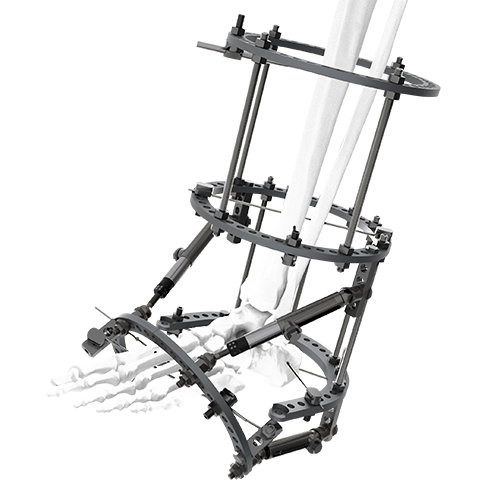
Lucie injured herself at the beginning of the summer in 2020, while wakeboarding. This resulted in a spiral femoral fracture. She underwent a first surgery to address the injury that resulted in her losing 3cm of length to her leg. After two months of battling pain, Lucie was unable to do the things she loved and struggled with even simple activities like walking. Limb-length discrepancy can be a challenging condition to tackle, with severe consequences if left untreated. An orthopedic surgeon in France recommended surgery with the Fitbone™ limb lengthening nail. She was operated on again in November 2020. Two months later, her femur had reached the original length. To learn more about Lucie’s story, please watch her video.
The patient stories above show an individual’s response to treatment. They are not intended to provide any indication or guarantee of the response other people may have. Please consult a qualified medical provider for diagnosis and treatment.
Important safety information: Download the Product Instructions For Use.
The Fitbone™ Intramedullary Limb-Lengthening System was developed in partnership with Professor Baumgart. The product was launched in 1997. Since then, this innovative treatment concept has grown into a global success story. The Fitbone™ TAA Intramedullary Lengthening system is intended for limb lengthening
of the femur and tibia.
With appropriate pre-operative planning, it is possible to ensure good limb alignment so that the limb is correct at the end of lengthening.
